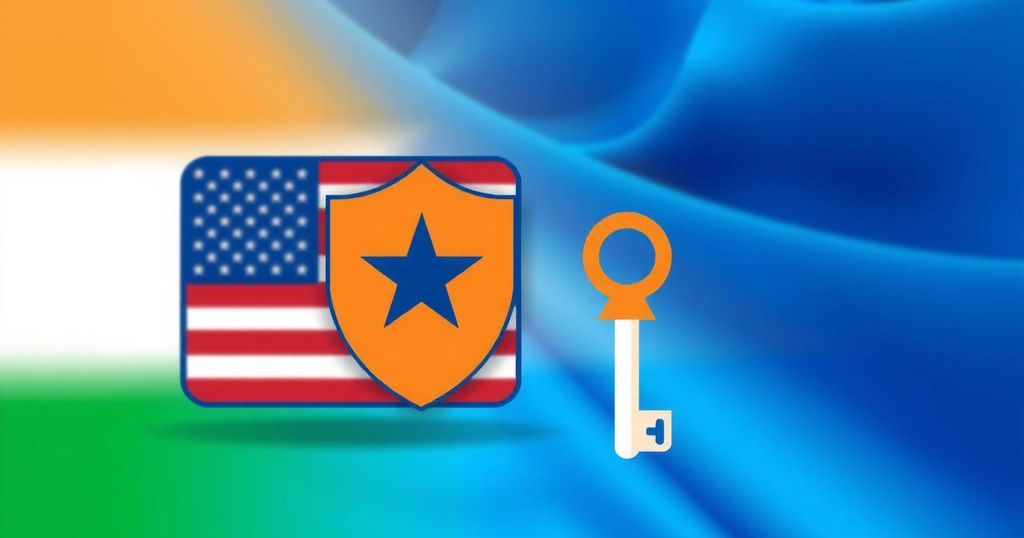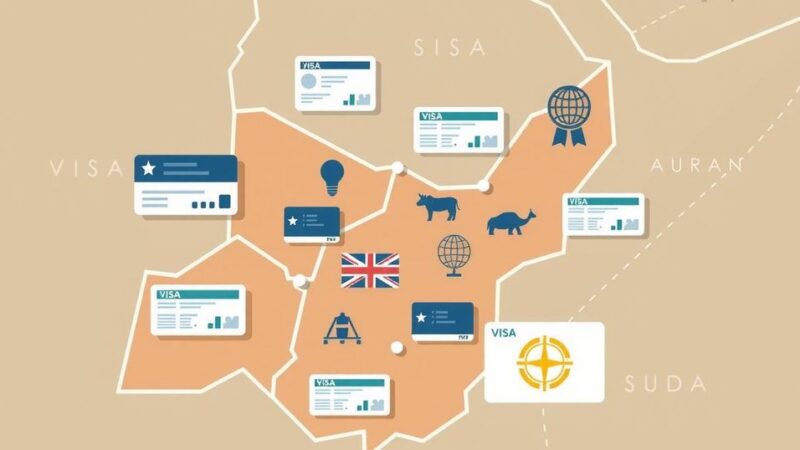Tulsi Gabbard visited New Delhi to meet with Ajit Doval, discussing intelligence sharing and security cooperation between the US and India. Their talks focused on terrorism, technology threats, and security in the Indo-Pacific region. A global intelligence conclave followed, addressing key topics such as counterterrorism and anti-India factions. Gabbard’s trip includes visits to multiple countries amidst tensions between India and Canada.
Tulsi Gabbard, the US Director of National Intelligence, visited New Delhi for a two-and-a-half-day engagement, marking her first high-level visit to India within the Trump administration. During her visit, Gabbard held extensive discussions with Ajit Doval, India’s National Security Advisor, focusing on enhancing intelligence sharing and security cooperation between the two nations. Doval also presided over a global intelligence conclave that drew top security officials from multiple countries such as Canada and the UK.
The dialogue between Doval and Gabbard reportedly addressed crucial issues including countering terrorism, emerging technological threats, and security matters concerning the Indo-Pacific region under the prevailing India-US strategic partnership. Sources indicated that the two officials engaged in a “good discussion” to strengthen bilateral ties in the security domain.
The conclave hosted in India assembled intelligence officials from the US, UK, Canada, Australia, Germany, New Zealand, and other allied nations. Although the proceedings were not open to public scrutiny, discussions revolved around significant subjects, such as counterterrorism financing, money laundering, and extradition issues. Concerns regarding anti-India factions operating from overseas, particularly pro-Khalistan groups, were also highlighted by the Indian delegation.
Gabbard’s international itinerary includes visits to Japan, Thailand, and France. She is scheduled to speak at the Raisina Dialogue in New Delhi on Tuesday and recently met Prime Minister Narendra Modi during his visit to Washington, DC. This trip follows her first foreign visit to the Munich Security Conference in Germany last month. Global conflicts like the ongoing Russia-Ukraine war and tensions in West Asia were also topics of discussion among intelligence officials during the conclave.
Tensions between India and Canada over the killing of Khalistani leader Hardeep Singh Nijjar added complexity to bilateral relations. Canadian Prime Minister Justin Trudeau had previously alleged potential involvement of Indian agents in the case, a claim India strongly refutes. The recent visit of Canadian spy chief Daniel Rogers to India is expected to further navigate these strained relations, particularly following the expulsion of diplomats from both nations in the wake of escalating tensions.
In summary, Ajit Doval’s meeting with Tulsi Gabbard highlights the strengthened commitment to enhancing US-India security and intelligence collaboration. Key discussions centered around combating terrorism and addressing security issues in the Indo-Pacific. Furthermore, the global intelligence conclave underscored the importance of international cooperation on key challenges such as counterterrorism financing and geopolitical conflicts. The ongoing tensions between India and Canada over the Nijjar case further emphasize the need for dialogue in international relations.
Original Source: www.business-standard.com






